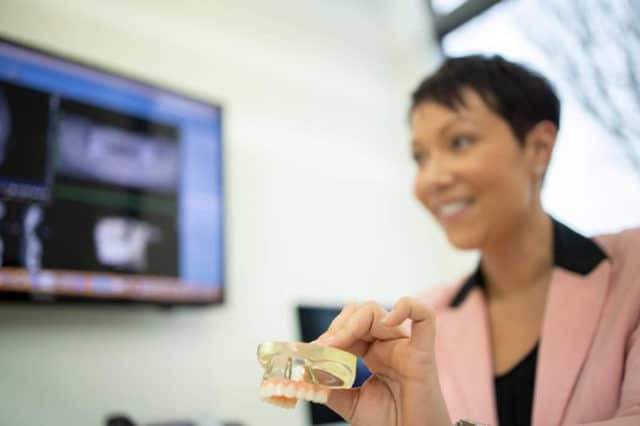The dental implant procedure is a complex yet highly effective method for replacing missing teeth, and it involves several key stages that require careful consideration and collaboration between the patient and the dental team. Here’s an in-depth expansion of what you can expect before, during, and after a dental implant procedure:
Before the Procedure:
Patient Consultation: The process begins with a thorough consultation between the patient and the dental team. During this stage, the patient’s oral health is assessed, and the need for dental implants is determined.
Treatment Planning: Once the need for dental implants is established, the patient and the dental team work together to create a customized treatment plan. This plan involves making important decisions, such as:
- Endosteal vs. Subperiosteal Implants: The type of implant (endosteal, which is inserted into the jawbone, or subperiosteal, which rests on the bone) is chosen based on the patient’s specific case.
- Implant Material: Patients and doctors decide whether to use titanium or zirconia implants, considering factors like strength and biocompatibility.
- Implant Brand: The selection of a reputable implant brand is crucial to ensure the highest quality and long-term success.
- Surgical Technique: The choice between traditional and alternative surgical techniques is made based on individual needs and preferences.

Patient Education: The surgeon explains the implant procedure, addressing the patient’s concerns and answering any questions to ensure that the patient is well-prepared for what lies ahead.
During the Procedure:
Tooth Extraction (if needed): If a damaged or remaining tooth is in question, it may be extracted on the day of the implant procedure.
Anesthesia: Local anesthesia is administered to numb the patient’s mouth, ensuring a painless and comfortable experience during the surgery.
Gum Incision: The surgeon makes an incision in the patient’s gums, exposing the underlying bone where the implant will be placed.
Implant Placement: The surgeon uses specialized drills to create a space in the jawbone (in the case of endosteal implants) and secures the implant in this space. Depending on the number of teeth being replaced, this process may be repeated at multiple locations.
Closure: After placing the implant(s), the surgeon closes the incisions with one to two stitches to promote proper healing.
Immediate Load or All-on-4 (if applicable): For certain cases, such as the immediate load or All-on-4 technique, a temporary crown is attached to the implant(s). However, it’s important to note that the permanent crown will only be affixed after a healing period of several weeks.
After the Procedure:
Recovery: Patients may have varying levels of alertness post-surgery, depending on the type of anesthesia used. Common post-operative symptoms include:
- Bruised Gums or Skin: Some bruising may be present around the surgical site.
- Swelling: The face and gums may become swollen, which usually subsides within a few days.
- Minor Bleeding: Minor bleeding is normal immediately after the procedure.
- Pain: Patients might experience pain or discomfort at the surgery site.
Medications: Dentists may prescribe pain medications and antibiotics to alleviate any discomfort and reduce the risk of infection.
Diet Modification: Patients will need to adhere to a soft-food diet for a period of seven to 10 days while their mouth heals.
Healing Time: The duration of healing varies depending on factors such as the number of teeth implanted, the patient’s bone health, and overall health. Healing typically takes several weeks.
Crown Placement: While the implant is healing, a customized, realistic crown is fabricated by the dentist. Once the implant has adequately healed, the crown is attached to the implant using an abutment, completing the restoration.

The dental implant procedure is a well-planned and executed process that involves collaboration between patients and dental professionals to achieve successful tooth replacement. Patients can expect a thorough pre-operative planning phase, a precise surgical procedure, and careful post-operative care, resulting in a fully functional and aesthetically pleasing smile.






